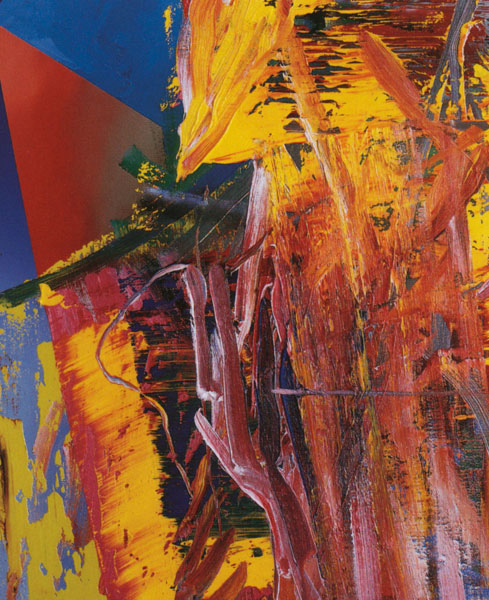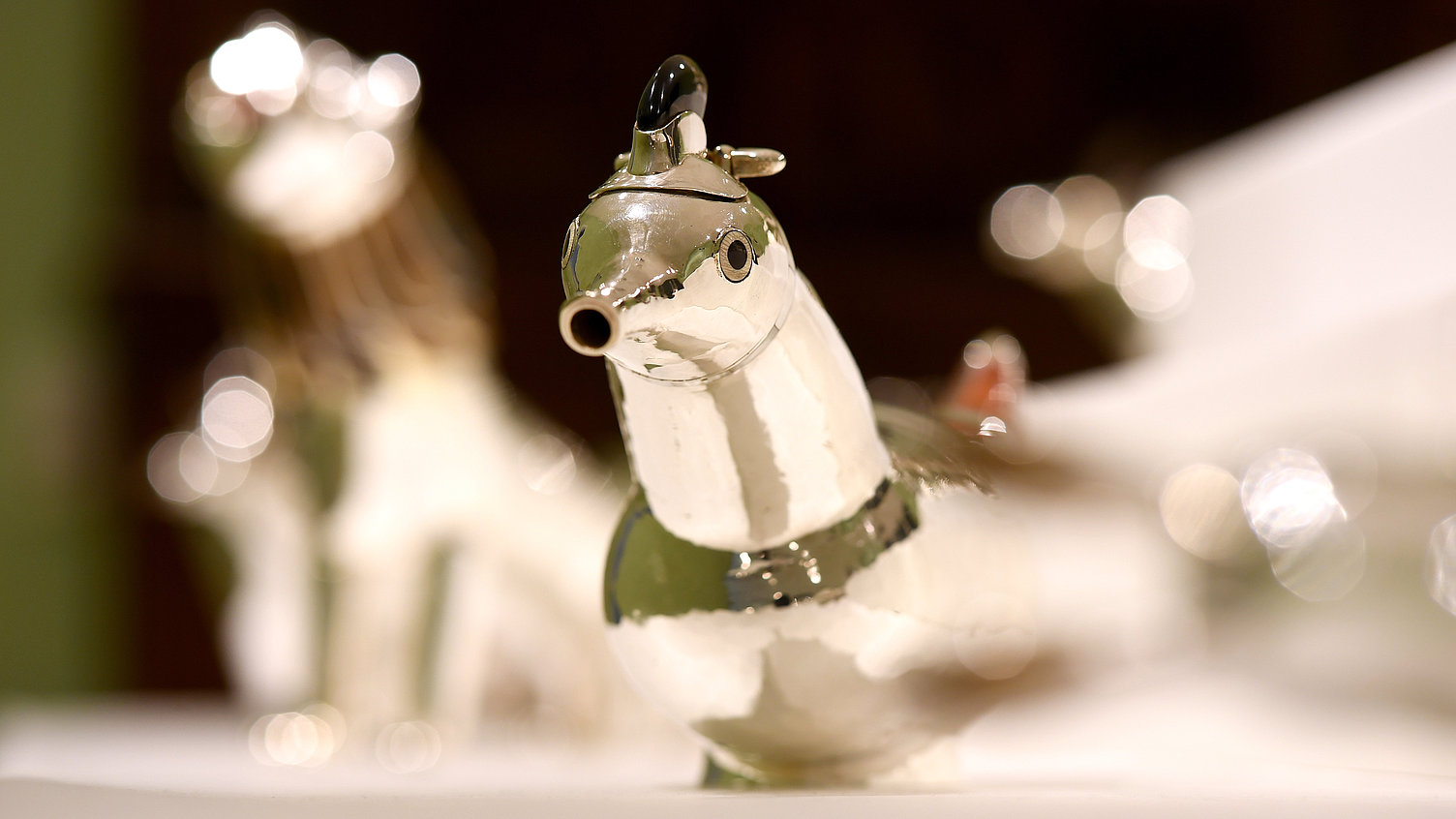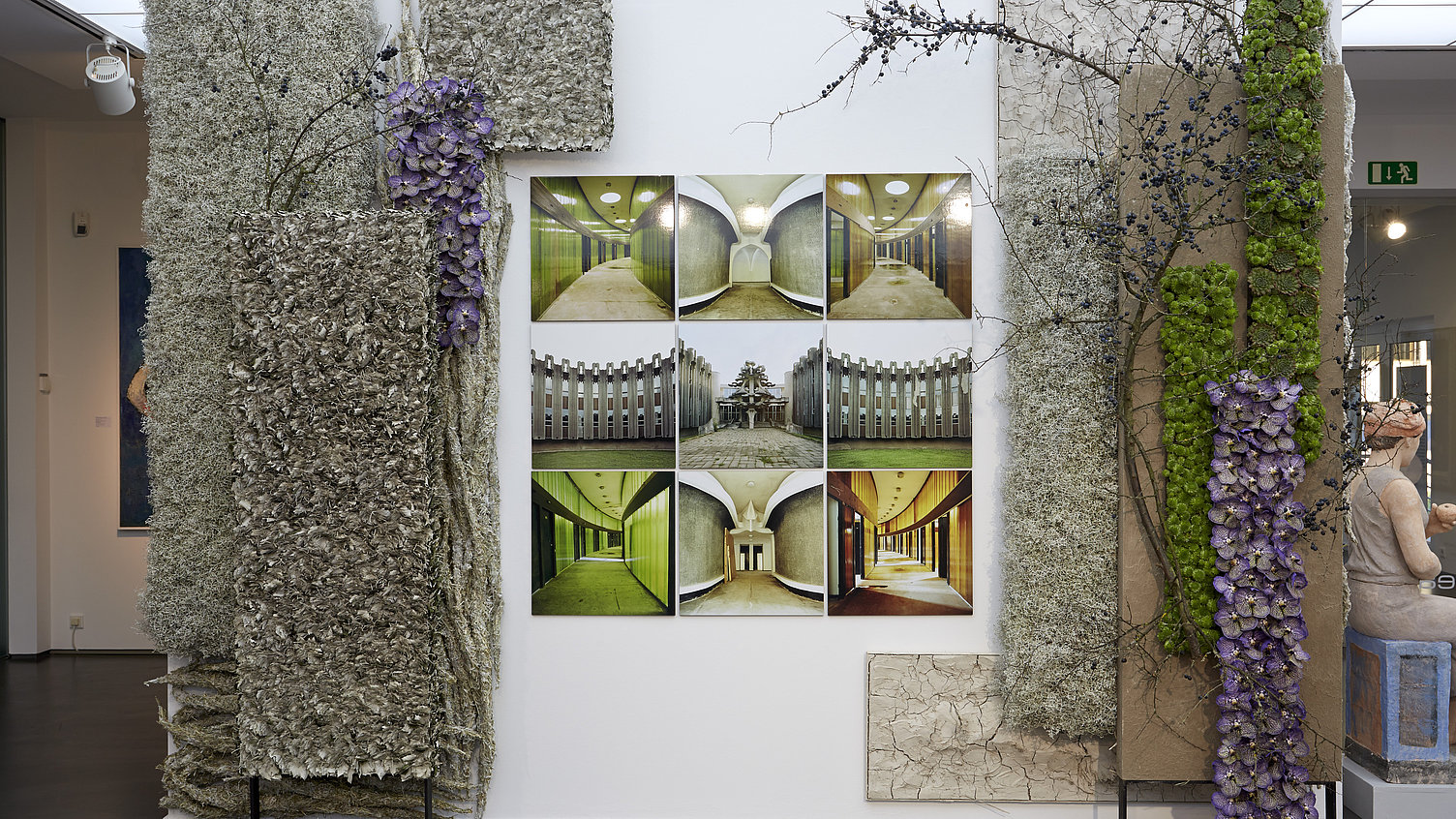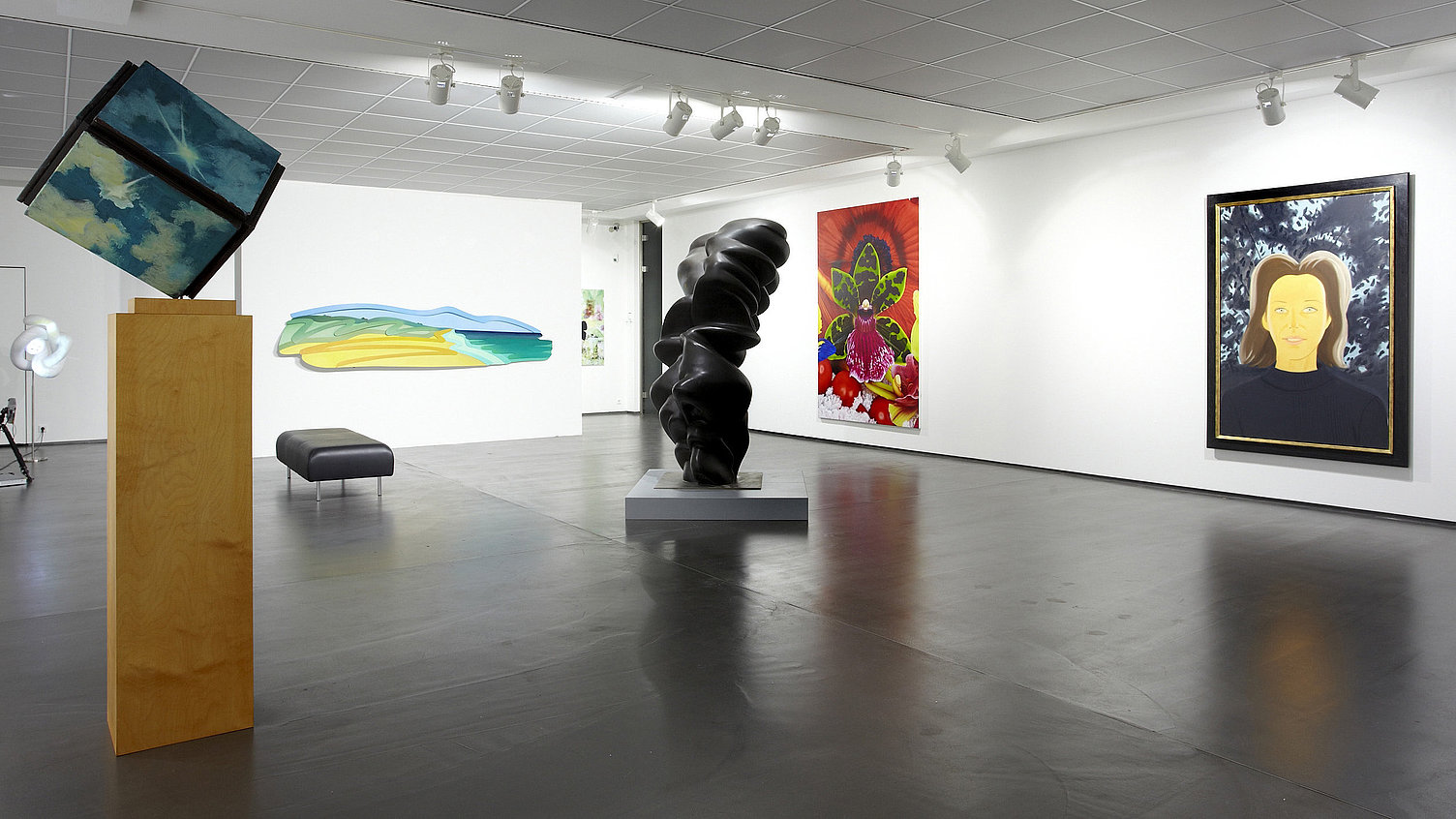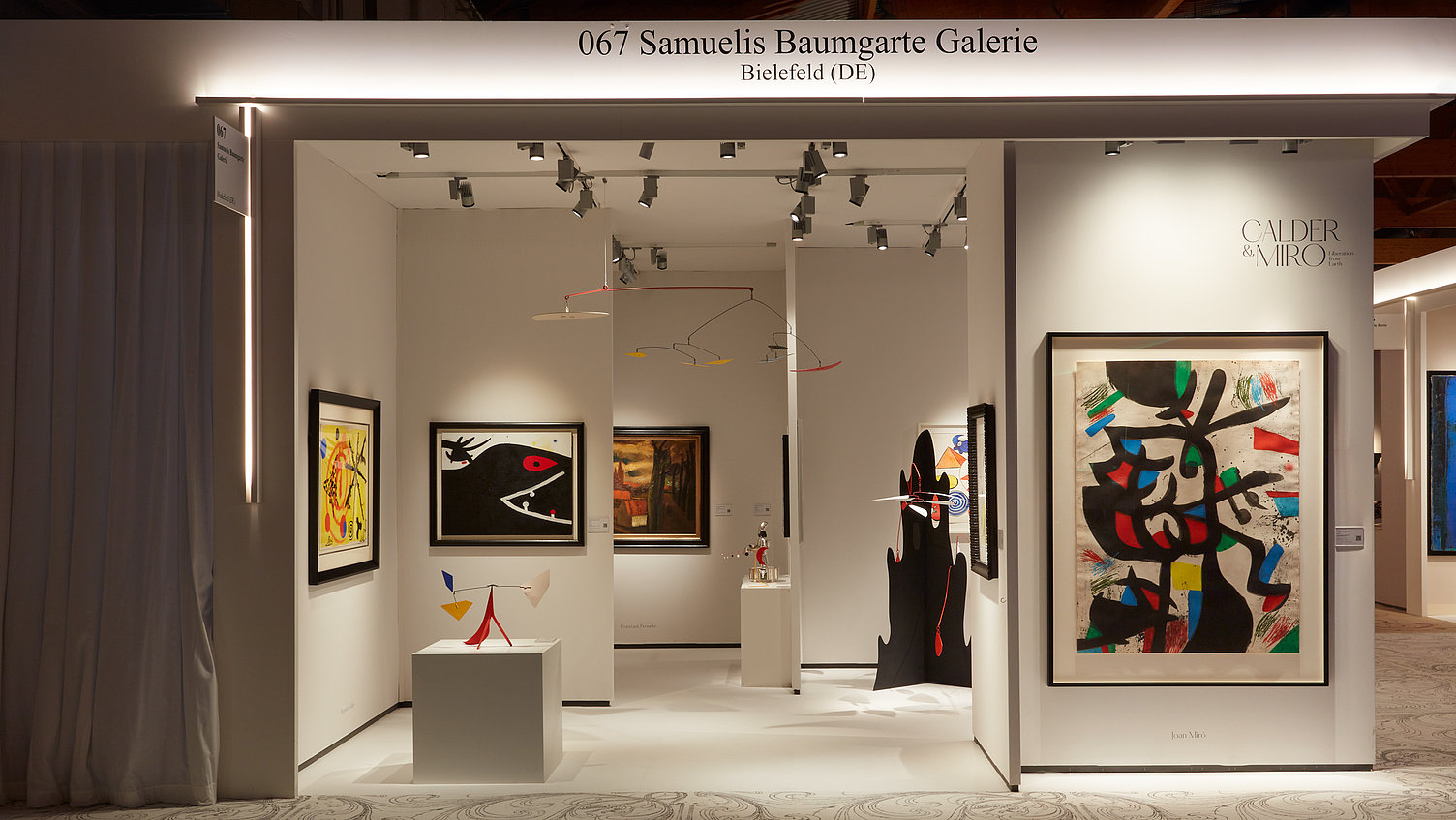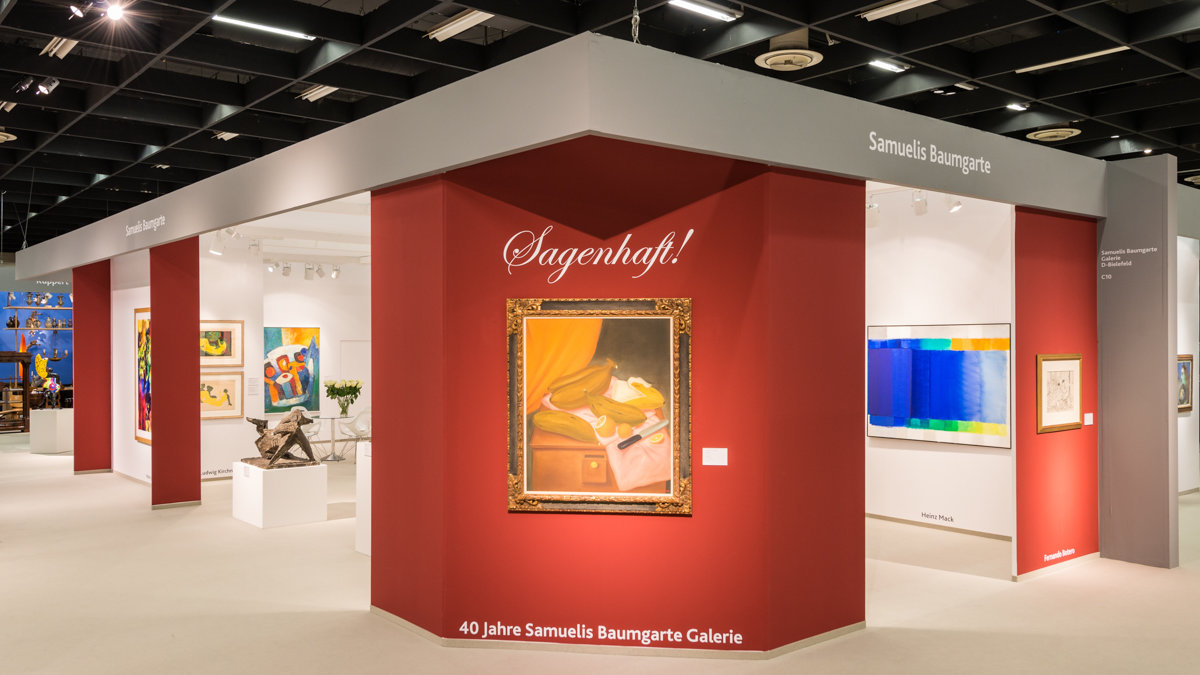Gerhard Richter
Biografie
Gerhard Richter ist einer der wichtigsten deutschen (und internationalen) Gegenwartskünstler. Er wurde 1932 zu Dresden geboren, studierte dort von 1951 bis 1956 an der Kunstakademie. Nach Umzug nach Westdeutschland studierte er noch einmal, an der Düsseldorfer Kunstakademie, von 1961 bis 1963; von 1971 an hat er dort gelehrt. Ausgehend vom Problem des Sozialistischen Realismus stellt er die Frage, was Malerei in den heutigen, von den Medien bestimmten Gesellschaften sein kann. Er macht die Bildsprache zum Thema seiner Bilder.
Richter verfolgt nicht nur ein einzelnes Konzept. Er pflegt vielmehr mehrere Aktivitätsfelder, die seit Dekaden friedlich nebeneinander existieren. Zunächst sind da seine auf Fotografien fußenden Werke, seine abstrakten Bilder (oft als malerische Gestaltung mit dem Zufall), die sein Schaffen seit 1976 beherrschen. Dazu kommen seine konzeptuellen Arbeiten, wie etwa die großen (200x200 cm) „1024 Farben“ von 1974 oder die „Grau“-Bilder, die durch ihre glänzende Oberfläche eine räumliche Beziehung zum Betrachter schaffen. Zu erwähnen auch die und die „Vermalungen“ in Braun und Grau, die sinnliche mit konzeptuellen Eigenschaften verbinden. Hinzu treten noch figurative Werke wie etwa die Kerzenbilder.
Richter zitiert und rekonstruiert in seinen Werken. Sein berühmtes Bild „Ema“, jetzt im Museum Ludwig zu Köln, zeigt einen weiblichen Akt, der eine Treppe heruntersteigt. Das ist ein direkter Bezug zu Marcel Duchamps „Nu, descendant un escalier“. Auch andere seiner auf Fotos basierenden Werke beziehen sich auf historische Vorbilder, auch dadurch, dass sie leicht unscharf gegeben sind – ein Hinweis auf Julia Margaret Cameron. In einigen Arbeiten benutzt er kunsthistorische Rekonstruktion, so wie in den Kerzenbildern. Sie beziehen sich zwar auf die reiche und vielfältige motivische Tradition der Kerze in der europäischen Malerei, sind aber rekonstruktiv, da sie nicht ein spezifisches Vorbild haben, also nicht zitieren. Sie haben aber wahrscheinlich eine gemeinsame Quelle, eine Lithografie von Honoré Daumier, die einen soeben vom Salon zurückgewiesenen Künstler zeigt. Er weist auf sein „Meisterwerk“, mit dessen Ablehnung die Jury sich seines Dafürhaltens als Versammlung von Dummköpfen erwiesen hat. Es zeigt eine brennende Kerze.
Richter setzt das ziemlich tote Motiv der Kerze wieder in den Kontext der Gegenwartskunst. Das ist die Rekonstruktion eines historischen Komplexes. (1) Richter rekonstruiert auch seine Seestücke und Wolkenbilder. Diese Thematik, als Hauptmotiv eines Bildes, kam im späten 18. Und frühen 19. Jahrhundert auf (z. B. bei Alexander Cozens), und, durch die Wiederaufnahme, präsentiert sich Richter als faszinierter Rekonstrukteur der Kunst des 19. Jahrhunderts, die er in sehr zeitgenössische Bilder verwandelt. Das zeugt auch von der Kontinuität künstlerischen Strebens, etwas, das Richter offensichtlich sehr gut versteht.
Die abstrakten Arbeiten erregten sehr großes Aufsehen als sie 1986 in einer großen Ausstellung in der Düsseldorfer Kunsthalle gezeigt wurden. Zu der Zeit glaubte jeder, dass die Abstraktion im Sterben läge, und Richter kam daher und erbrachte den Gegenbeweis. Seine abstrakten Bildelemente besitzen strukturelle Form, die gegen rein informelle Partien der Bilder gesetzt werden und die Oberflächenstrukturen bestimmter Farbfelder umreißen. Einige seiner Abstraktionen scheinen „geschlossen“, sie verweigern dem Betrachter einen Zugang und lassen ihn außen vor einer lebendig gestalteten Farbfläche stehen. Andere wiederum schaffen einen Bildraum enormer Tiefe, der den Betrachtern zum Erforschen zur Verfügung steht.
Mit diesen Werken zeigt Richter durch unablässiges Forschen, was Malerei sein kann, nämlich die Komplexität der Realität, die im Großen und Ganzen auch die der Malerei ist.
(1) Siehe Gerhard Charles Rump: Rekonstruktionen. Positionen zeitgenössischer Kunst. Berlin 2010, S. 105-107
Ich verwische, um alles gleich zu machen, gleich wichtig und gleich unwichtig.
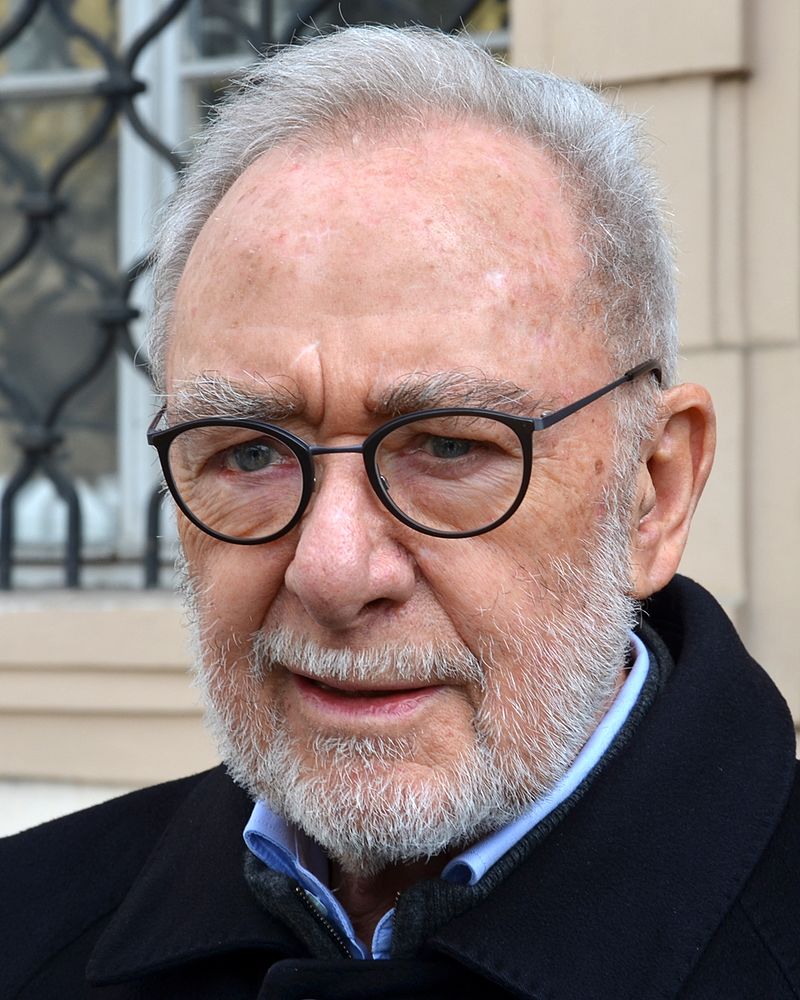
Ausstellungen
Messen
Museumsausstellungen (Auswahl)
Gerhard Richter. Grauer Spiegel, 14. Mai – 1. November 2020, Kunst-Station Sankt Peter Köln.
Gerhard Richter. Abstraktion, bis 21.10.2018, Museum Barberini, Potsdam
Birkenau, 06.02.2016 - 29.05.2016, Museum Frieder Burda, Baden-Baden
... and there was time, bis 31.01.2016, Centro de Artes Visuales Fundación Helga de Alvear, Cáceres, Spanien
Cézanne bis Richter: Meisterwerke aus dem Kunstmuseum Basel, bis 21.02.2016, Kunstmuseum Basel Museum für Gegenwartskunst, Schweiz
Deutsche Kunst Nach 1960, 24.06.2015 - 15.11.2015, Essl Museum - Kunst der Gegenwart, Klosterneuburg, Österreich
Neupräsentation im Albertinum, 28.02.2015 - 27.09.2015, Gemäldegalerie Neue Meister, Staatliche Kunstsammlung Dresden, Dresden
Gerhard Richter: Neupräsentation im Albertinum, bis 27.09.2015, Staatliche Kunstsammlungen Dresden
Land in Sicht, 14.03.2015 - 17.09.2015, Weserburg - Museum für Moderne Kunst, Bremen
Verzweigt: Bäume in der zeitgenössischen Kunst, 15.03.2015 - 14.06.2015, ALTANA Kulturstiftung Museum Sinclair-Haus, Bad Homburg v.d.H.
Arbeiten auf Papier aus der Sammlung Frieder Burda, 26.03.2015 - 25.05.2015, Deutsche Bank KunstHalle, Berlin
Variations: Abstract Painting today, 24.08.2014 - 22.05.2015, Los Angeles County Museum of Art, Los Angeles
Bilderwahl! Monolithic Water, bis 01.03.2015, Kunsthaus Zürich
Gerhard Richter, Ausschnitt. Werke aus der Sammlung Böckmann, bis 22.02.2015, Neues Museum in Nürnberg, Nürnberg
40 | 10 Bilderwechsel, bis 15.02.2015, Museum Frieder Burda, Baden-Baden
Ausweitung der Kampfzone. 1968-2000. Die Sammlung Teil 3, 08.11.2013 - 31.12.2014, Neue Nationalgalerie, Kulturforum, Berlin
Collection on Display, 30.08.2014 - 09.11.2014, Migros Museum für Gegenwartskunst, Zürich
40 Jahre Sammlung / 10 Jahre Museum Frieder Burda, 12.07.2014 - 26.10.2014, Museum Frieder Burda, Baden-Baden
Non basta ricordare. Collezione MAXXI, bis 28.09.2014, MAXXI_Museo Nazionale delle arti del XXI secolo, Rom
Zwischen Foto und Druck: Grafik von Andy Warhol bis Gerhard Richter, 28.06.2014 - 28.09.2014, Museum Folkwang, Essen
Gerhard Richter, 18.05.2014 - 07.09.2014, Fondation Beyeler, Riehen, Schweiz
Gerhard Richter: Post-war drawings and prints, bis 31.08.2014, The British Museum, London
Gerhard Richter, bis 27.07.2014, Kunstmuseum Winterthur, SchweizKunst & Textil - Stoff als Material und Idee in der Moderne von Klimt bis heute, bis 22.06.2014, Staatsgalerie Stuttgart
Gerhard Richter-Die Kunst im Plural, 15.02.2014 - 09.03.2014, Kunstsammlung Nordrhein Westfalen, Düsseldorf
Gerhard Richter: Panorama, 06.06.2012 - 24.09.2012, Musée national d\'art moderne, Centre Georges Pompidou, Paris
Gerhard Richter. Dessins et travaux sur papier, 07.06.2012 - 17.09.2012, Musée du Louvre, ParisGerhard Richter, 27.04.2012 - 16.06.2012, Beirut Art Center, Beirut, Libanon

